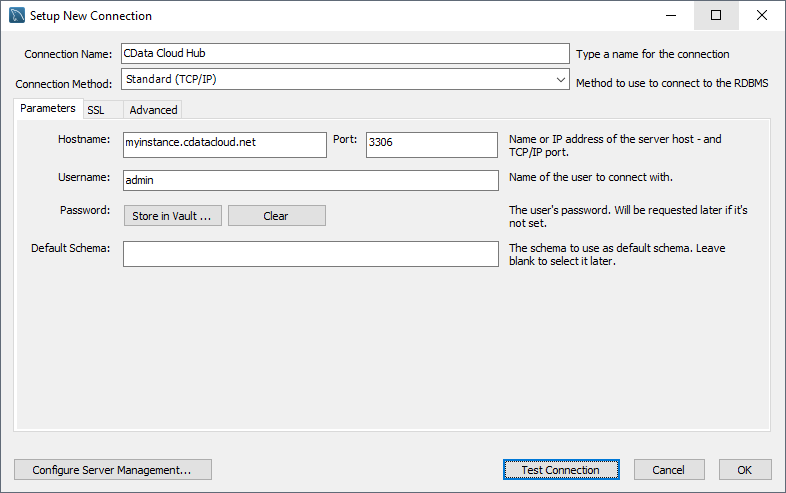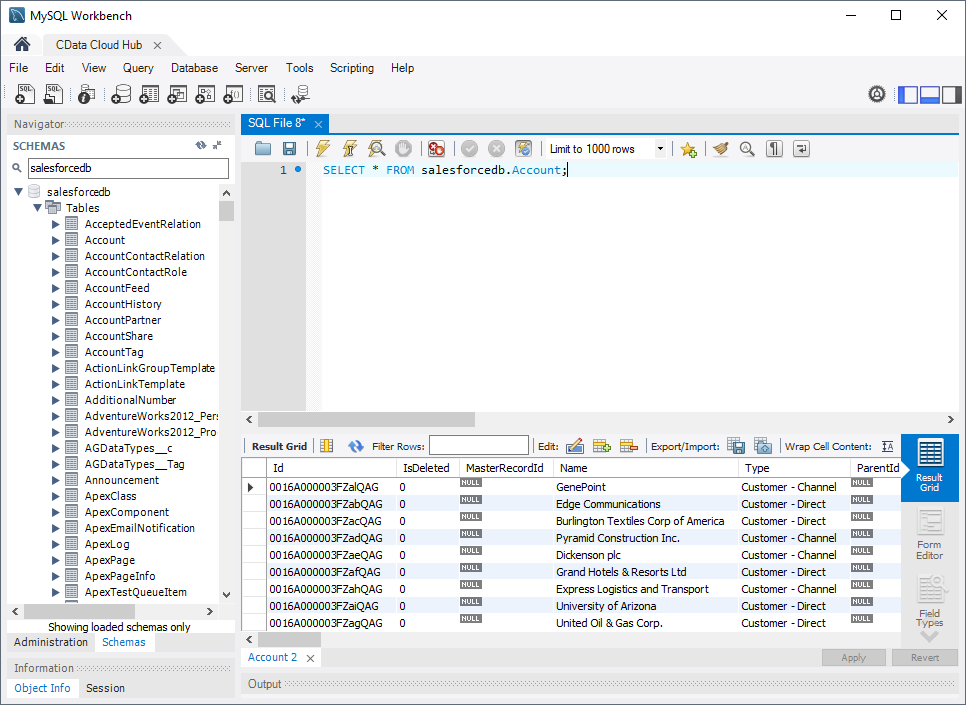Discover how a bimodal integration strategy can address the major data management challenges facing your organization today.
Get the Report →Query REST Data in MySQL Workbench
Create a virtual MySQL database for REST data in CData Connect (or Connect Server) and work with live REST data in MySQL Workbench.
MySQL Workbench allows users to administer MySQL environments and gain better visibility into databases. When paired with CData Connect (on-premise or Connect Server), you get live access to REST data as if it were a MySQL database. This article shows how to create a virtual database for REST in Connect and work with live REST data in MySQL Workbench.
Create a Virtual MySQL Database for REST Data
CData Connect uses a straightforward, point-and-click interface to connect to data sources and generate APIs.
- Login to Connect and click Connections.
![Adding a connection]()
- Select "REST" from Available Data Sources.
-
Enter the necessary authentication properties to connect to REST.
See the Getting Started chapter in the data provider documentation to authenticate to your data source: The data provider models REST APIs as bidirectional database tables and XML/JSON files as read-only views (local files, files stored on popular cloud services, and FTP servers). The major authentication schemes are supported, including HTTP Basic, Digest, NTLM, OAuth, and FTP. See the Getting Started chapter in the data provider documentation for authentication guides.
After setting the URI and providing any authentication values, set Format to "XML" or "JSON" and set DataModel to more closely match the data representation to the structure of your data.
The DataModel property is the controlling property over how your data is represented into tables and toggles the following basic configurations.
- Document (default): Model a top-level, document view of your REST data. The data provider returns nested elements as aggregates of data.
- FlattenedDocuments: Implicitly join nested documents and their parents into a single table.
- Relational: Return individual, related tables from hierarchical data. The tables contain a primary key and a foreign key that links to the parent document.
See the Modeling REST Data chapter for more information on configuring the relational representation. You will also find the sample data used in the following examples. The data includes entries for people, the cars they own, and various maintenance services performed on those cars.
![Configuring a connection (SQL Server is shown).]()
- Click Save Changes
- Click Privileges -> Add and add the new user (or an existing user) with the appropriate permissions.
With the virtual database created, you are ready to connect to REST from MySQL Workbench.
Query REST from MySQL Workbench
The steps below outline connecting to the virtual REST database in Connect from MySQL Workbench and issuing basic queries to work with live REST data.
Connect to REST through Connect
- In MySQL Workbench, click to add a new MySQL connection.
- Name the connection (CData Connect).
- Set the Hostname, Port, and Username parameters to connect to the SQL Gateway.
- Click Store in Vault to set and store the password.
- Click Test Connection to ensure the connection is configured properly and click OK.

Query REST Data
- Open the connection you just created (CData Connect).
- Click File -> New Query Tab.
- Write a SQL query to retrieve REST data, like SELECT * FROM restdb.people;

With access to live REST data from MySQL Workbench, you can easily query and update REST, just like you would a MySQL database. Request a demo of the CData Connect and start working with REST just like a MySQL database today.








